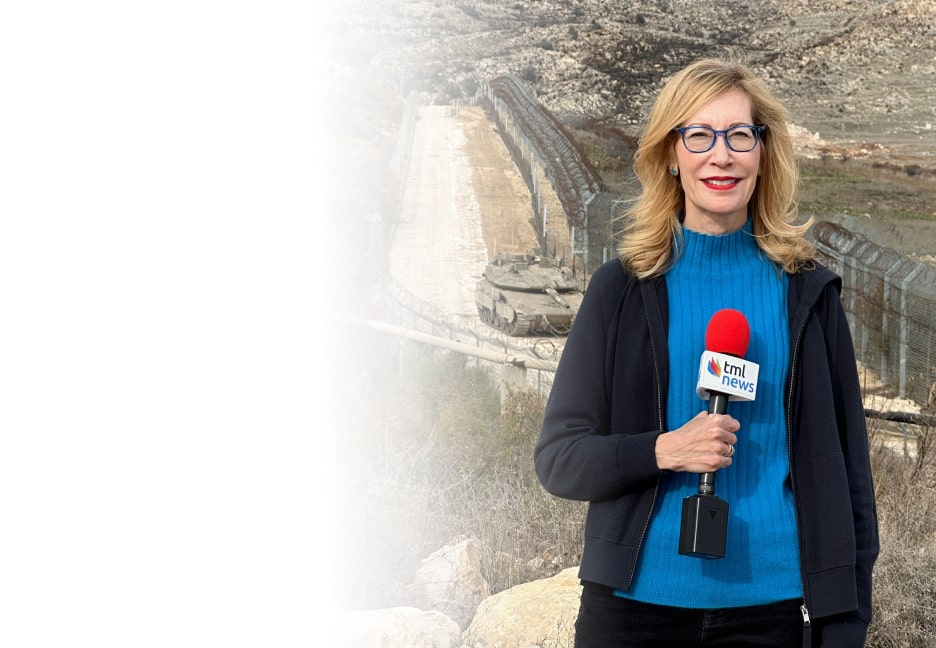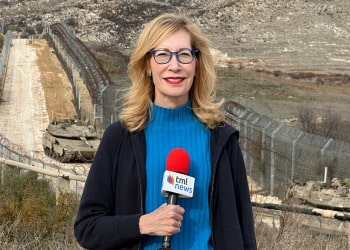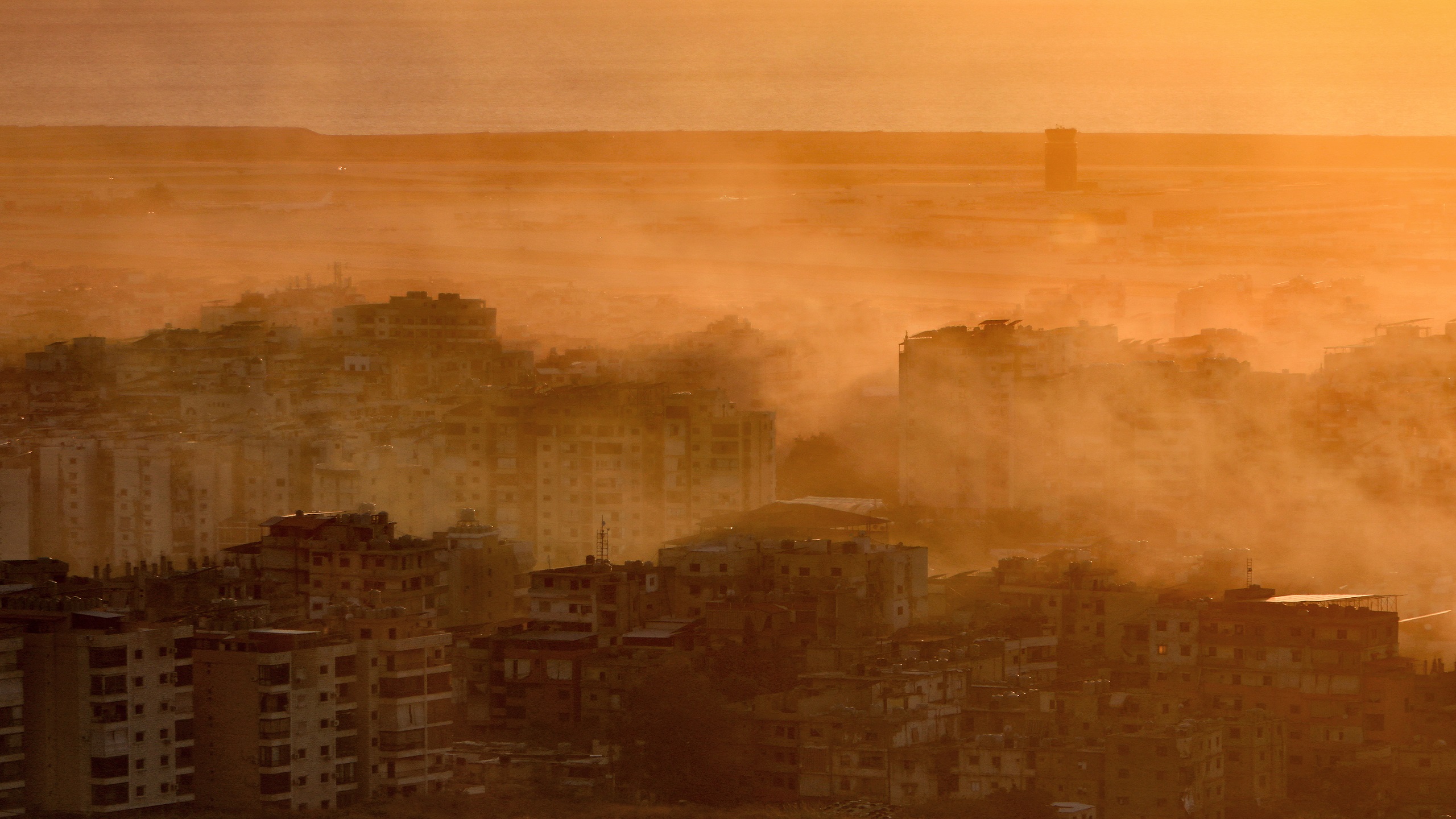War’s Hidden Casualties: The Environment Suffers Severe Damage in the Middle East
The current conflict in the Middle East will leave a lasting environmental impact, prompting calls for urgent restoration and cross-border cooperation
Last week’s observance of the International Day for Preventing the Exploitation of the Environment in War and Armed Conflict highlighted the often-overlooked toll war exacts on nature. While war casualties are typically counted in human lives and destroyed cities, nature endures profound and silent damage.
The 2023-2024 conflict in the Middle East exemplifies this destruction, with severe and widespread environmental impacts across the region. Hezbollah rocket attacks ignited wildfires that consumed over 2,500 acres in northern Israel, devastating habitats, worsening air pollution, and straining environmental management efforts. In Lebanon, military operations have destroyed 11,000 acres of forest and 2,000 acres of farmland. In Gaza, nearly 39 million tons of debris have polluted the environment, damaged wastewater treatment systems, tainted water supplies, and deepened the food security crisis.
The United Nations Environment Program reports that over the past 60 years, at least 40% of internal conflicts have been linked to natural resource exploitation, including oil, timber, fertile land, and water.
Professor Colin Price of Tel Aviv University’s School of Geosciences detailed to The Media Line the extensive environmental damage from the 2023 Middle East conflict, encompassing both visible and underlying effects.
The natural vegetation and ecosystems have been impacted quite severely due to the war
“There’s been a lot of damage to ecosystems, natural forests, and shrublands on both sides of the border, both in the north and in the south,” he explained. He described how fires have ravaged forested areas in northern Israel due to missile strikes, while in southern Lebanon, military actions have led to significant damage, including the intentional destruction of vegetation used as natural camouflage for Hezbollah hideouts. “The natural vegetation and ecosystems have been impacted quite severely due to the war,” Price emphasized.
Yaakov Garb, a professor of interdisciplinary environmental research at Ben-Gurion University of the Negev, discussed with The Media Line the significant but often overlooked environmental consequences of the ongoing conflict, especially the diversion of vital resources away from critical global issues. “One of the main things is all of the budget, lost time, and energies that get directed towards political violence,” he explained. He pointed out the immediate environmental hazards, such as untreated sewage and accumulated waste.
This holiday season, give to:
Truth and understanding
The Media Line's intrepid correspondents are in Israel, Gaza, Lebanon, Syria and Pakistan providing first-person reporting.
They all said they cover it.
We see it.
We report with just one agenda: the truth.


People are breathing it in, and it’s on the ground. It will linger unless thorough cleaning is done
“People are breathing it in, and it’s on the ground. It will linger unless thorough cleaning is done,” Garb emphasized. He noted that even in stable times, these regions struggled to allocate enough resources for critical environmental challenges such as biodiversity loss, climate change, and food security. “Before the war, they barely had the budgets and attention span for those things. After the war, certainly not,” he added.
In addition to immediate ecosystem damage, Price highlighted the significant pollution and emissions resulting from military operations. “With all the tanks, aircraft, and heavy machinery, the military is using enormous amounts of fuel, releasing greenhouse gases into the atmosphere,” he noted.
“While globally, the impact might not be noticeable, regionally, it’s undoubtedly contributing to air pollution and greenhouse gas emissions,” he said, further noting hazards from fuel leaks. “People care less about pollution during warfare, and leaks from petrol tanks, along with waste from feeding soldiers, can lead to serious pollution. This waste can have a chain reaction, attracting rodents and impacting local ecosystems,” he explained.
Addressing infrastructure damage, Price described Gaza’s dire situation. “The desalination plant that provides drinking water was out of service, so people had to rely on bottled water, which caused plastic pollution,” he explained. He also mentioned that damaged sewage treatment facilities caused untreated sewage to flow through streets and into the Mediterranean Sea, further polluting the environment and endangering public health. “These facilities normally provide essential services, but when they’re damaged, it takes time and risk to repair them, and crews are often unable to work safely during the conflict,” he added, emphasizing the cascading impact on daily life and health.
Garb, who has extensive experience addressing contamination issues globally, including in the West Bank and Gaza, detailed the types of pollution war can create. “When one building burns down, it releases all kinds of harmful substances. You burn the plastic, there are batteries inside, and almost everything you can think of—especially plastics and electronics—releases nasty substances when burned in an uncontrolled way,” he explained. He described the far-reaching impact of explosions and fires, which disperse fine particles over extensive areas. “These particles come from industrial facilities, factories with chemicals, and storage places with heavy metals. It’s a widespread problem,” Garb noted.
Price discussed fires near the Israel-Lebanon border, highlighting the dual threat they pose to human health and ecosystems. “The smoke from these fires contains dangerous particles, impacting health,” he said, noting that many residents in northern Israel have been forced to evacuate. The ecological damage could take years to repair. “It may take five, 10, or even 15 years for vegetation to grow back, depending on the severity of the fires. Ecosystem recovery is a slow process,” Price added, emphasizing the need for strategic planning, including replanting fire-resistant vegetation.
Price acknowledged the immense challenges of addressing environmental damage in an active war zone while discussing potential solutions. “It’s hard to carry out environmental recovery work during a military operation because it’s simply too dangerous,” he said. However, he expressed hope for post-conflict restoration efforts, which he views as essential. “Once the fighting ends, we can work on reforestation, restoring wetlands, and landscape planning to encourage natural regeneration,” he said.
Garb emphasized the lasting environmental impact of damaged tree cover and neglected agricultural land. When asked about solutions, Garb stressed the urgent need to end the conflict: “It’s very simplistic and sweeping, but you stop the war. Both sides need to focus on the real pressing long-term issues that are not going away,” he said. “The sooner we face them and devote time to them, the better.”
Pollution doesn’t recognize borders, and untreated sewage from Gaza could easily wash up on Israeli beaches
Price underscored the interconnected nature of environmental challenges, suggesting they could inspire cooperation between opposing sides. “Despite the mistrust, there are still ways both sides work under the radar,” he said, referring to shared resources such as the Mediterranean Sea. “Pollution doesn’t recognize borders, and untreated sewage from Gaza could easily wash up on Israeli beaches, so there’s an interest in cross-border cooperation when it comes to environmental protection,” he concluded.

